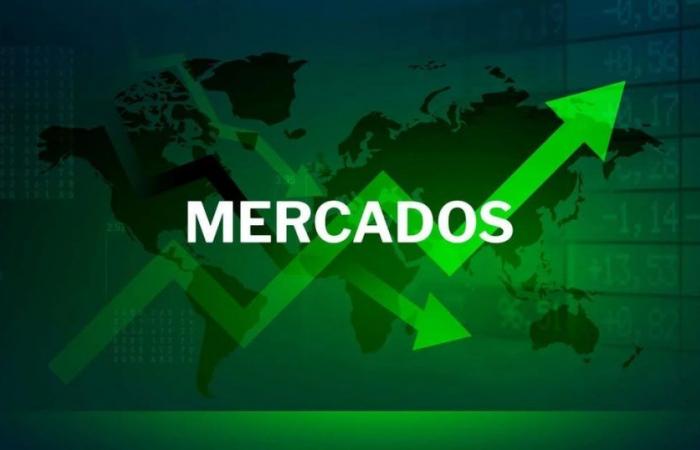Positive start to the day for the Mexican S&P/BMV IPC index, which begins on Wednesday, June 19, with slight increases in the 0.22%until the 53,306.44 points, after opening. In relation to the changes of this day with respect to past dates, the Mexican S&P/BMV IPC index accumulates four consecutive sessions in positive figures.
In relation to the profitability of the last week, the Mexican S&P/BMV IPC index marks an increase of 1.97%%therefore in the last year there is still an increase in 0.34%. The Mexican S&P/BMV IPC index is one 9.21% below its maximum so far this year (58,711.87 points) and a 2.89% above its minimum price of the current year (51,807.55 points).
A stock index is an indicator that shows how the value of a set of assets changesso it takes data from various companies or sectors of a part of the market.
These indicators are mainly used by the stock exchanges of various countries and each of them can be integrated by companies with specific requirements such as having a similar market capitalization or belonging to the same industry. In addition, there are some indices that only consider a handful of shares to determine their value or others that consider hundreds of shares.
Stock market indices serve as indicator of stock market confidence, business confidence, health of the national and global economy, and stock investment performance and shares of an entity. Generally, if investors lack confidence, stock values tend to fall.
Likewise, they function to measure the performance of an asset manager and allow investors to analyze comparisons between return and risk; measure the opportunities of a financial asset or create portfolios.
This type of indicators began to be used at the end of the 19th century after the journalist Charles H. Dow. carefully analyzed how company shares tended to rise or fall in price together, so he created two indices: one that contained the 20 most important railway companies (as it was the most important industry at the time), as well as 12 shares of other types of businesses
Currently in our economy there are various indices and They can be grouped based on geographic location, sectors, company size or even asset type.For example, the US Nasdaq index is made up of the 100 largest companies mostly related to technology such as Apple (AAPL), Microsoft (MSFT), Amazon (AMZN), Facebook (FB), Alphabet (GOOG), Tesla (TSLA ), Nvidia (NVDA), PayPal (PYPL), Comcast (CMCSA), Adobe (ADBE).
Each stock index has its own calculation method, but the main component is the market capitalization of each company that comprises it. This is obtained by multiplying the day’s value of the share in the corresponding stock market by the total number of shares that are on the market.
Firms that appear on the stock market are obliged to present a balance of its composition. Said report must be notified every three or six months, as appropriate.
Reading a stock index also requires observing its evolution over time. Current indices always appear with a fixed value based on stock prices on your start date, but not everyone follows this method. Therefore, it can be a source of misunderstandings.
If one index sees an increase of 500 points in one day, while another only adds 20, it could appear that the first had a better return. But, if the first started the day at 30,000 points and the other at 300, it can be assumed that, in percentage terms, the gains for the second were more notable.
Between the main stock indices in the American Union There is the Dow Jones Industrial Average, better known as Dow Jones, made up of 30 companies. Likewise, the S&P 500, which includes 500 of the largest companies on the New York Stock Exchange. Finally, we must not forget the Nasdaq 100which associates 100 of the largest non-financial firms.
On the other hand, the most notable indices of Europe are the Eurostoxx 50, which covers the 50 most important companies in the eurozone. He too DAX 30, the main German index that contains the strongest companies on the Frankfurt Stock Exchange; the FTSE 100 from the London Stock Exchange; he CAC 40 from the Paris Stock Exchange; and the IBEX 35from the Spanish stock market.
In Asiawe have the Nikkei 225, made up of the 225 largest companies on the Tokyo Stock Exchange. There is also the SSE Composite Index, is seen as the most representative of China, made up of the most prominent companies on the Shanghai Stock Exchange. The same role played by Hang Seung Index in Hong Kong and KOSPI in South Korea.
Talking about Latin Americayou have the CPIwhich contains the 35 most prestigious firms on the Mexican Stock Exchange (BMV). At least a third of them belong to the capital of magnate Carlos Slim.
Another is the Bovespa, made up of the 50 most important companies on the Sao Paulo Stock Exchange; he Merval from Argentina; he IPSA From Chile; he MSCI COLCAP from Colombia; he IBC of Caracas, made up of 6 companies from Venezuela.
Likewise, there are other types of global stock indices such as the MSCI Latin Americawhich includes the 137 most important companies in Brazil, Chile, Colombia, Mexico and Peru.
Likewise, there is the MSCI World, which includes 1,600 companies from 23 developed countries; he MSCI Emerging Markets, made up of more than 800 companies from developing countries; and the S&P Global 100made up of the 100 most powerful multinational firms on the entire planet.


